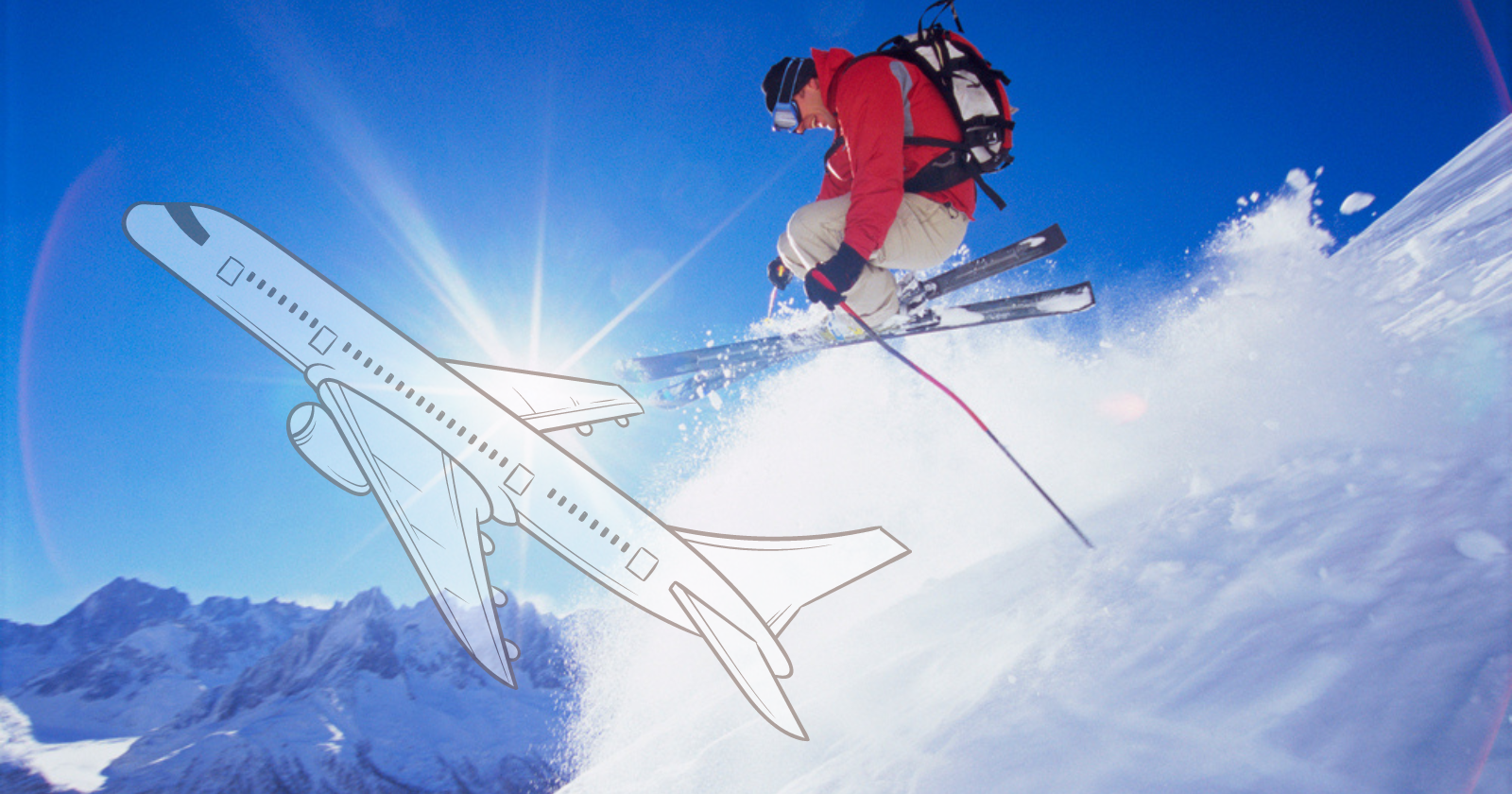As you plan your ski trip, are you wondering how to pack skis and boots for flying? Properly packing your ski equipment is essential to ensure it arrives undamaged and ready for the slopes.
In this comprehensive article, we will guide you through TSA-approved tips on how to pack skis and boots for flying while adhering to airline baggage policies.
Preparing Your Ski Equipment For Packing
Before learning how to pack skis and boots for flying, it’s crucial to prepare your equipment.
- First, clean your skis and boots and remove dirt, snow, and moisture to prevent potential issues during transit.
- Next, use a brush with soft bristles to clean the bindings and the base of the skis. For the boots, ensure the shells and liners are dry. Disassemble your ski equipment if necessary, such as removing the bindings from the skis or separating them into two parts if they are foldable.
- Finally, inspect your skis, bindings, and boots for any damage or wear so that you can address any issues before your trip.

Packing Skis For Air Travel
Now that your equipment is ready, let’s dive into how to pack skis and boots for flying. First, choose the right ski bag to protect your skis during transit. Consider factors such as:
- Padding: Padded ski bags offer additional protection for your skis, particularly during rough handling at airports.
- Hardshell vs. Softshell: Hardshell cases provide the best protection against impact, while softshell cases are lighter and more affordable.
- Size and weight: Ensure your ski bag meets your airline’s size and weight restrictions to avoid extra fees.
After you have chosen your bag, it is time to pack.
- Secure your skis within the bag using straps to prevent them from shifting during transit.
- Use padding and dividers to separate the skis, protecting their surfaces from scratches.
- Position the bindings facing each other, reducing the chance of damage.
- Pad the ski tips and tails with foam, bubble wrap, or clothing for extra protection.
- Pack additional ski equipment and accessories like poles, goggles, helmets, and protective gear.
- Bundle poles with rubber bands or straps and place them alongside the skis.
- Pack goggles and helmets in their protective cases, and nestle them between the skis or in the bag’s compartments.
- Lastly, label your ski bag with your name, address, and phone number to ensure a smooth retrieval process at your destination.
How To Pack Skis And Boots For Flying
When learning how to pack skis and boots for flying, pay attention to the importance of properly packing your ski boots. Choose the right boot bag or alternative packing method, such as:
- Dedicated boot bags: These bags will hold ski boots securely and often have separate compartments for additional gear.
- Packing boots in a suitcase: If you don’t have a dedicated boot bag, wrap your boots in a plastic bag or cloth and place them in your checked luggage.
- Packing boots in a carry-on: To save space in your checked luggage and keep them close, pack them in your carry-on, but ensure they meet your airline’s size restrictions.
Additional packing tips for how to pack skis and boots for flying:
- Prepare your boots for packing by buckling them to maintain their shape, and remove liners and insoles for drying if necessary.
- Pack additional boot accessories like boot warmers, footbeds, and insoles in separate compartments or ziplock bags.
- Remember to label your boot bag with your contact information, just like your skis.
Understanding TSA guidelines and airline baggage policies for how to pack skis and boots for flying is crucial. First, familiarize yourself with TSA guidelines for ski equipment, such as allowed and prohibited items, as well as size and weight restrictions. Generally, TSA allows ski equipment as checked baggage, but it’s essential to check their website for the most up-to-date information.
Stay informed about airline baggage policies regarding checked baggage fees, oversized and overweight fees, and any special handling procedures for ski equipment. Each airline may have slightly different guidelines, so research your specific airline’s rules to avoid unexpected fees or complications.
When you arrive at the airport, check in your ski equipment at the appropriate counters, typically the oversized luggage or special handling counters. Inform airline staff that your luggage contains ski equipment and ensure they handle it with care.
Unpacking And Reassembling Your Ski Equipment
Once you’ve mastered how to pack skis and boots for flying, remember to unpack and reassemble your equipment correctly upon arrival at your destination. Inspect your skis, bindings, boots, and other gear for damage that may have happened during transit. Address any issues promptly with the airline if damage has occurred.
- Assemble your skis, bindings, and poles if you have disassembled them for packing.
- Reinstall liners and insoles in your boots, ensuring they are dry and comfortable before hitting the slopes.
- Take the time to adjust your bindings and ensure your boots fit appropriately before skiing to maximize safety and comfort.

FAQs For How To Pack Skis And Boots For Flying
We have gathered three frequently asked questions about how to pack skis and boots for flying.
How can I protect my ski equipment from damage during air travel?
To protect your ski equipment during air travel:
1. Secure your skis within the bag using straps and padding, and pad the ski tips and tails with foam, bubble wrap, or clothing.
2. Bundle poles together and place them alongside the skis, and store goggles and helmets in their protective cases.
3. For ski boots, buckle them to maintain their shape and pack them in a dedicated boot bag or wrap them in a plastic bag or cloth before placing them in your checked luggage or carry-on.
Are there any restrictions on carrying ski equipment on flights?
Yes, restrictions on carrying ski equipment on flights may vary depending on the TSA guidelines and your airline’s baggage policies. Generally, TSA allows ski equipment as checked baggage, but you should check their website for the most up-to-date information.
Each airline has specific policies regarding checked baggage fees, oversized and overweight fees, and special handling procedures for ski equipment. Research your particular airline’s rules to avoid unexpected fees or complications.
Can I pack my ski boots in my carry-on luggage?
Yes, you can pack your ski boots in your carry-on luggage, but you must ensure they meet your airline’s size restrictions for carry-on items. To save space and protect your boots:
- Buckle them to maintain their shape and remove liners and insoles for drying if necessary.
- Wrap your boots in a plastic bag or cloth to keep them clean and separate from your other belongings.
- Be prepared to remove your boots from your carry-on for security screening if requested by TSA agents.
Additional Resources
If you are looking for more tutorials, walkthroughs, and troubleshooting on Accessories, here are some additional posts about Accessories:
How To Pack Skis And Boots For Flying – Conclusion
With these TSA-approved tips on how to pack skis and boots for flying, you can confidently embark on your ski trip knowing your equipment is well-protected. Following these guidelines allows you to enjoy a hassle-free travel experience and focus on having fun on the slopes.
Don’t hesitate to share your experiences and tips on how to pack skis and boots for flying in the comments section below.
Happy travels, my friends.
